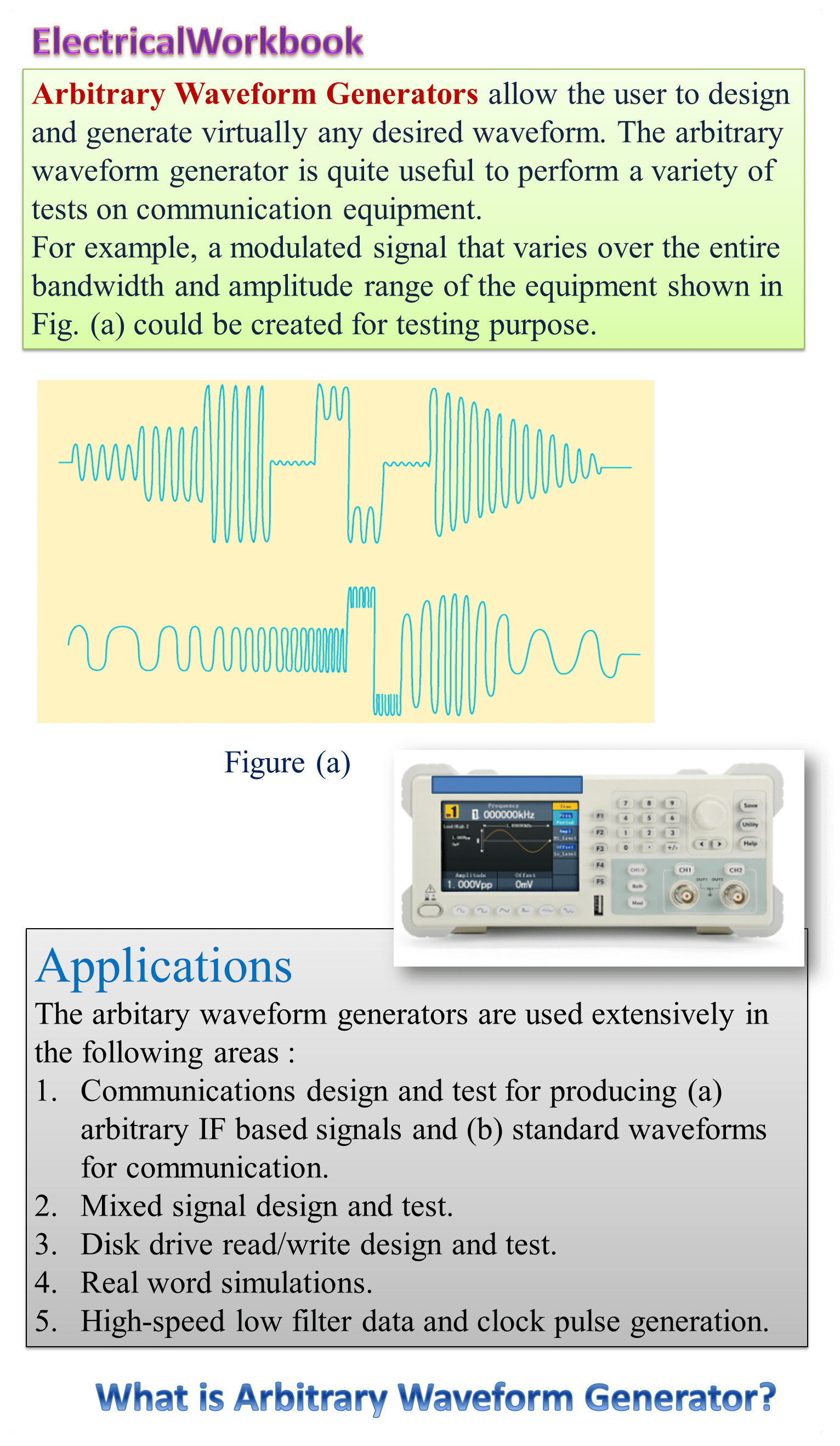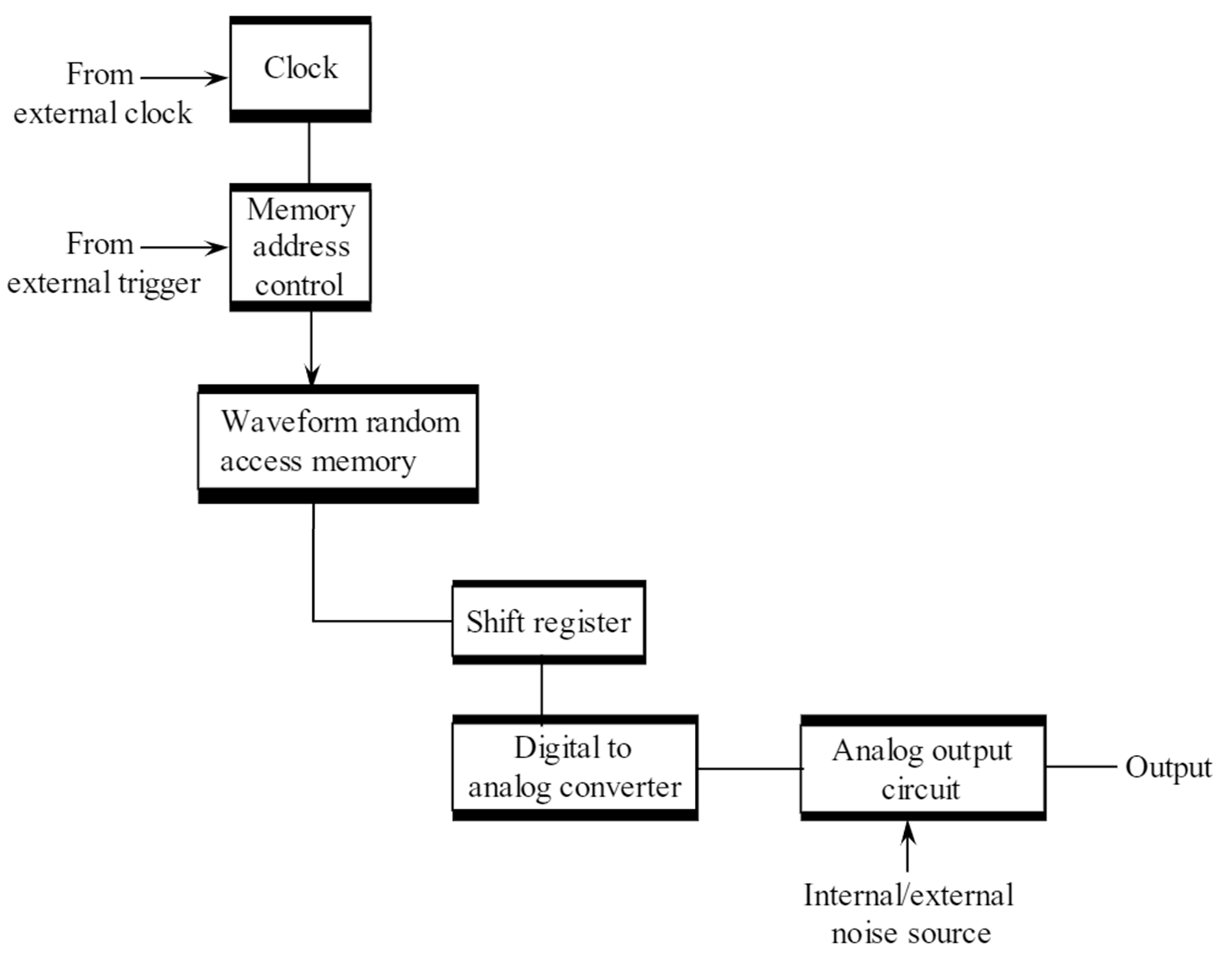
Arbitrary waveform can be defined as a waveform which does not have a particular predefined shape or characteristics. The amplitude and frequency of an arbitrary waveform vary in a random manner. An arbitrary waveform may possess periodicity at some times and non-periodicity at other times. It may also include transients, noise components etc.
An Arbitrary waveform can be generated by superimposing either noise or DC offset voltages upon a standard signal or by introducing gaps between waveform bursts or by performing various modulations (such as amplitude, frequency, phase modulations) on a standard signal.
Arbitrary waveforms are used as test signals to determine whether the test equipment is functioning properly and also to detect any faults if present in the equipment. In this respect, arbitrary waveform is applied as input to the test equipment and its response is analyzed as the arbitrary waveform progresses through the equipment.
Block Diagram of Arbitrary Waveform Generator
Arbitrary Waveform Generator is a waveform generator, which generates waveforms based on digital data stored in RAM. This digital data gives the detail information of the constantly varying voltage levels of an AC signal without or with DC content. The basic block diagram of arbitrary waveform generator is shown in the below figure 1.

Figure 1: Block Diagram of Arbitrary Waveform Generator
In this type of waveform generator, digital data is stored in waveform random access memory. In this type, a cathode ray oscilloscope is used to measure a waveform in which the data is sampled. A digital to analog converter shown in figure 1, is used to read back the memory locations and feeding the data points thereby reconstructing the signal at any time. From Nyquist sampling theorem we know that,
fs = 2fm
Where,
fs = Sampling frequency
fm = Maximum frequency component of the sampled signal
If the above condition is satisfied then we can achieve better fidelity. Therefore, the details of the needed signal discovered which requires as many points as necessary for digital data stored in RAM. Usually, the stored data points are read by arbitrary waveform generator whose frequency limits are specified. But, the instrument can operate at a finite maximum frequency. Usually, the operating frequency or sample rate of this instrument is specified in terms of M samples/s or G samples/s.